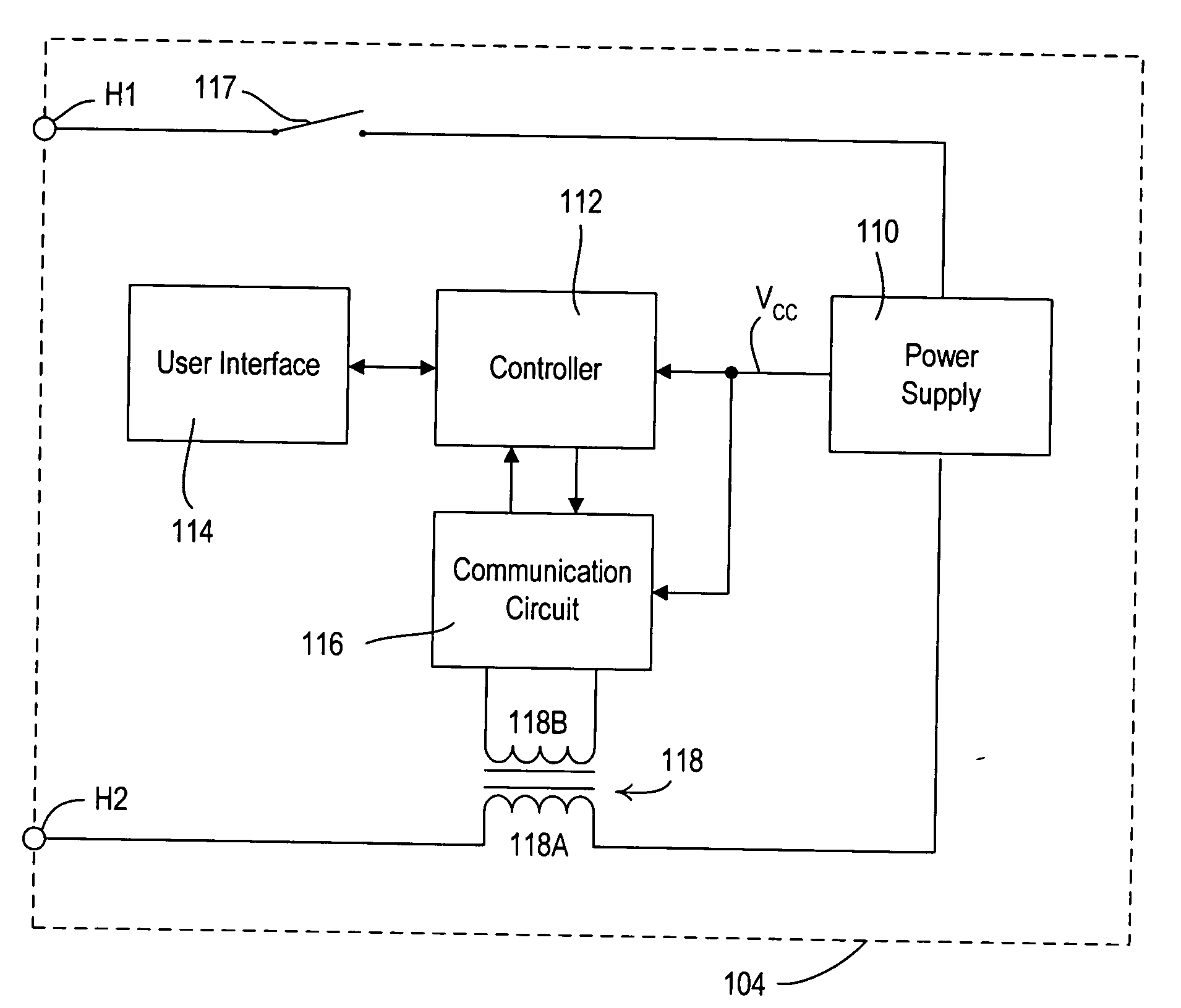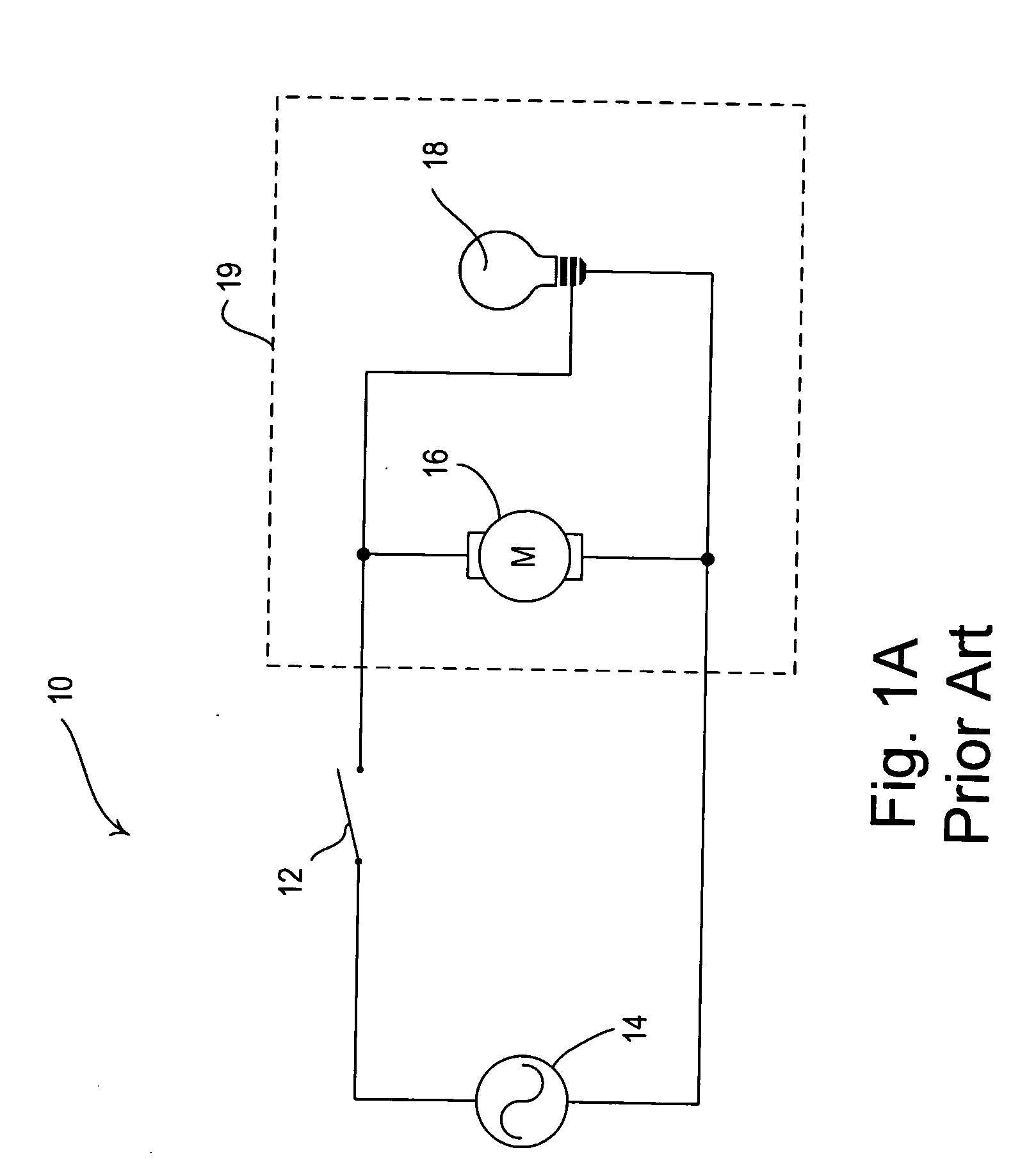System for control of lights and motors
a technology for controlling systems and motors, applied in the field of systems for controlling lights and motors, can solve problems such as difficult to isolate communication signals from other devices connected to the power system, limitations of existing power-line carrier systems, and inability to use x10 protocol
- Summary
- Abstract
- Description
- Claims
- Application Information
AI Technical Summary
Benefits of technology
Problems solved by technology
Method used
Image
Examples
first embodiment
[0066]Next, the median filter 200 determines the median of the W samples at step 268. According to the present invention, the median filter 200 groups (i.e., orders) the ones and zeros of the W samples and determines the value of the middle sample. For example, if the present W samples are[0067]1011001,
the median filter 220 will group the zeros and the ones to form a sorted sample stream[0068]0001111.
The median for the sorted sample stream is one, since the median or middle value is one.
second embodiment
[0069]According to the present invention, the median filter 220 counts the number of ones in the W samples to determine the median at step 268. For an Nth order median filter, the median is one if the count of the ones is greater than or equal to the value of N+1. Otherwise, the median is zero. Thus, for a 3rd order median filter, if there are four ones in the W samples, the median will be equal to one. Accordingly, the width W of the median filter 220 must always be an odd number, i.e., 2N+1. The median filter 220 is preferably implemented with a lookup table that counts the ones and returns a one if the count is greater than or equal to N+1 or a zero otherwise. By using the lookup table, the filtering process is able to complete in a few instruction cycles thereby making the computation on a microcontroller exceptionally fast.
[0070]Finally, at the step 270, the median filter 220 provides the median determined in step 268 as the output sample 272 to form the filtered Manchester enc...
PUM
 Login to View More
Login to View More Abstract
Description
Claims
Application Information
 Login to View More
Login to View More - R&D
- Intellectual Property
- Life Sciences
- Materials
- Tech Scout
- Unparalleled Data Quality
- Higher Quality Content
- 60% Fewer Hallucinations
Browse by: Latest US Patents, China's latest patents, Technical Efficacy Thesaurus, Application Domain, Technology Topic, Popular Technical Reports.
© 2025 PatSnap. All rights reserved.Legal|Privacy policy|Modern Slavery Act Transparency Statement|Sitemap|About US| Contact US: help@patsnap.com



